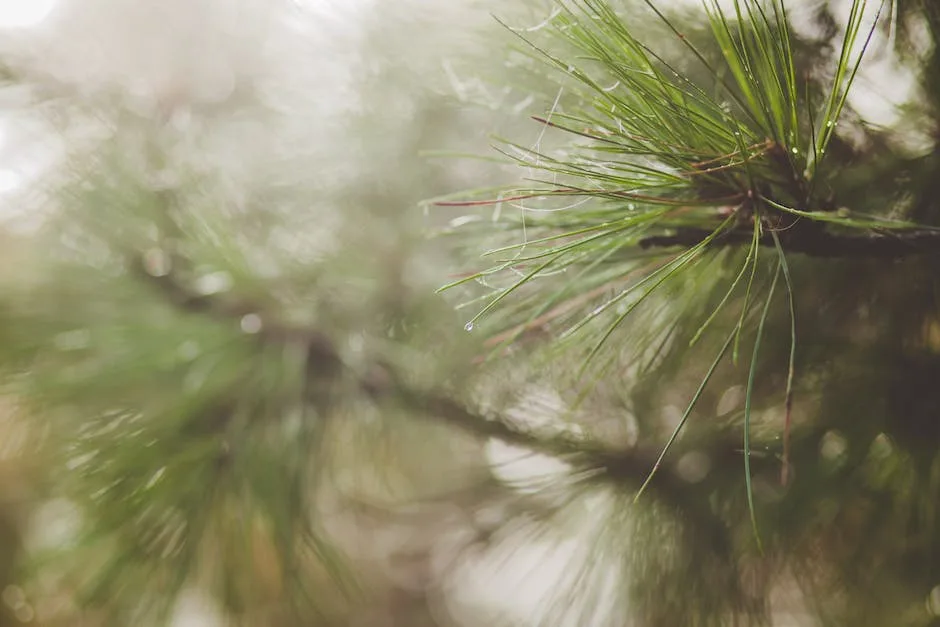Pine roots are one of the longest roots in the plant kingdom. They can grow up to 100 feet in length. Pine trees have a deep and widespreading root system that is essential to their survival in nature. The roots are used to anchor the tree in the ground, absorb water and nutrients, and store energy.
Pine tree roots typically grow to a depth of about 2 to 3 feet. However, some species of pine trees can have roots that go down as much as 10 feet deep.
How far to pine tree roots spread?
Pine trees have roots that can extend 2 to 3 times the width of their dripline. In other words, the dripline is the farthest point from the tree where foliage is growing. So, if you have a pine tree with a dripline of 10 feet, its roots could extend 20 to 30 feet from the trunk of the tree.
Pine trees have roots that extend straight down into the soil. Because of this, pine trees have almost no impact on your foundation.
Do pine trees have a deep root system
Pines have deep tap roots and shallower root systems. Even if the pine tree root structure is not close enough to your home to damage the foundation, it is still possible that the tree could be in a risky place.
The tap root on a pine tree is a deep root that allows the tree to proliferate in deep sandy soil conditions. Despite the deep tap root, a large main lateral root is evident directly under the soil surface. This allows the tree to have a strong foundation in its native habitat.
Should I remove a pine tree close to house?
If trees are hanging over the roof or too close to a structure, they might need to be removed – or at least regularly pruned. In general, large trees should be at least 20 feet away from a house or building.
Pine trees are the most likely to break in high winds or under ice and snow loads in storms. This is because they are tall and full of foliage at the top, which makes them top-heavy.
What is the danger of pine trees?
Pine trees produce harmful gases that can muddle up the air quality, especially when mixed with other airborne chemicals. These chemicals are often produced by human activity, and result in tiny, invisible particles that can be harmful to breathe in. If you live near a pine tree, you may want to consider moving if the air quality is a concern for you.
A pine tree that has all brown needles is likely dead and should be removed. A pine that dies slowly after being damaged in a storm may keep yellow-green needles for a year or more before turning yellow and quickly progressing to brown.
How do I get rid of pine tree roots in my lawn
If you plan to cut roots around a tree, it’s important to mark the area beforehand. This will help you avoid accidentally damaging the tree. Use a pruning saw to cut the roots cleanly, and be careful not to damage the tree. Pull the cut roots up and away from the tree, and then refill the hole with soil from the same area.
Pines are one of the longest living tree species and can typically reach ages of 100-1,000 years old. Some pines even live longer than that! The longest lived pine is the Great Basin bristlecone pine (Pinus longaeva) which can live up to 4,800 years old. That’s pretty amazing!
Can pine tree roots damage pipes?
If you have trees on your property, it is important to be aware of the potential damage their roots can cause to your sewer lines. All types of trees, including willows, oaks, and pines, have roots that can penetrate and damage sewer lines. This can lead to costly repairs and must be taken into consideration when planning your landscape.
Pine trees are incredibly resilient and are capable of withstanding surprisingly strong winds. Research shows that a mature pine tree can handle gusts up to 50 mph without impact, though more powerful gusts can lead to broken branches, uprooted trunks and even trees completely blown over.
Are pine tree roots a problem
Pine trees have an aggressive root system that can quickly take over an area. They are also quite tall, so their roots need to be strong to support them in the wind. Pine trees’ tap root systems help them stay upright and even connect with other trees.
The shepherd’s tree is a native of the Kalahari Desert and has the deepest documented roots of any tree, reaching over 70 meters, or 230 feet, deep. This impressive tree is a valuable resource in the arid desert environment, providing shade, shelter and food for wildlife. The shepherd’s tree is a slow-growing species that can live for up to 100 years.
Which tree roots damage foundations?
There are many types of trees that can cause foundation issues, not just oaks, poplars, and ash trees. Some deciduous trees that can cause problems are the black locust, boxelder, Norway maple, silver maple, sweetgum, sycamore, and tuliptree. It’s important to be aware of all the potential hazards when planting trees near your home.
Thanks for the advice!
Will pine tree roots damage a foundation
Unfortunately, this often includes the spaces around and under a home’s foundation. Once a tree’s roots have infiltrated these areas, they can begin to cause problems for the home’s structure and stability. In some cases, tree roots can even damage the foundation itself.
If you have concerns that tree roots may be damaging your home’s foundation, it’s important to have a professional tree care company assess the situation. They will be able to advise you on the best course of action to take, which may involve tree removal.
There is a direct correlation between the value of a property and the presence of trees. In general, properties with good tree cover see a 7 percent increase in value, while those with quality landscapes and healthy trees see an increase of 9 to 12 percent. Trees obviously provide numerous benefits to a property, from shade and privacy to increased curb appeal. If you’re looking to increase the value of your property, planting trees is a great way to do so.
Will a pine tree live if you cut the top off
If you are considering topping a large evergreen tree, be aware that it is not recommended. Topping removes the upper main stem, leaving the tree susceptible to internal decay, disease and damaging insects. In addition, this removal eliminates the tree’s most productive portion.
Pine trees require minimal pruning and are considered low maintenance. Their natural shape is quite trim without really needing a lot of help. The only time you really need to prune a pine tree is if there is a broken limb or some sort of other damage that needs to be corrected.
Which trees are most likely to fall in a storm
trees are vulnerable to high winds, experts say some varieties are at greater risk of failure, including Bradford pears, cedar, balsam fir, white spruce, several varieties of pines, sometimes hemlocks, and older water oaks and willow oaks, especially in areas where the soil has been modified or their area .
Pine bark beetles are dangerous pests that can kill individual trees and cause extensive damage in outbreak years. Their activities can be extremely disruptive to forest management practices aimed at wood and fiber production. In order to control these pests, it is important to understand their biology and behavior.
Do pine trees purify the air
Pine trees are known to purify the air around us. Even their scent is helpful in reducing inflammation for people with asthma or allergies.
As Christmas approaches, please be aware that there are at least 20 types of pine trees that are toxic to both livestock and humans. Yew Pine, also known as Buddhist Pine or Japanese Yew, is one of the most common and can cause nausea, diarrhea and vomiting. Other types of pines to beware of include:
Conclusion
The roots of a pine tree can vary in length depending on the species of tree, but they typically range from 10 to 20 feet in length.
Pine trees have relatively shallow roots compared to other trees. This is due to the fact that they grow in sandy or rocky soil and need to spread their roots out to anchor themselves. While their roots are shallow, they are also very strong and can reach up to 100 feet in length.

My interest in trees started when I first saw the giant sequoias in Yosemite.
I was a teenager then, and I remember thinking, “I need to learn more about this.”
That moment stuck with me.
A few years later, I went on to study forestry at Michigan Tech.
Since graduating, I’ve worked in a mix of hands-on tree care and community education.
I’ve spent over ten years helping people understand how to plant, maintain, and protect the trees in their neighborhoods.
I don’t see trees as just part of the landscape.
They are living things that make a real difference in our daily lives.